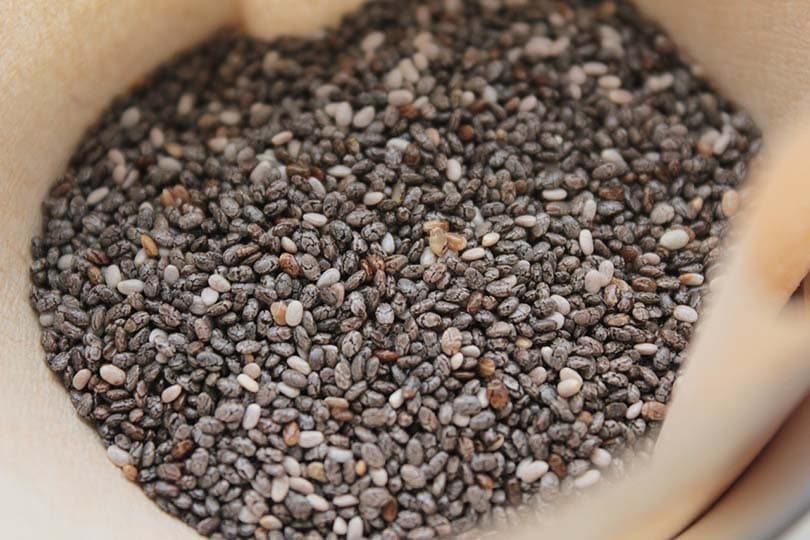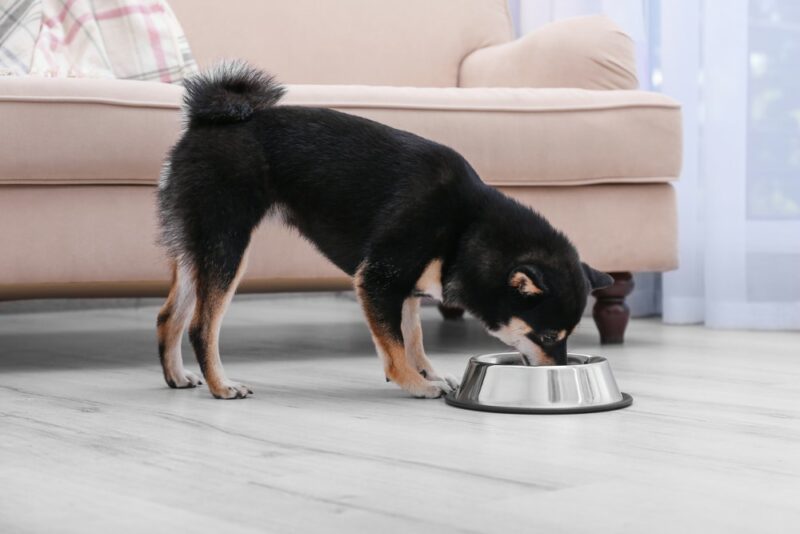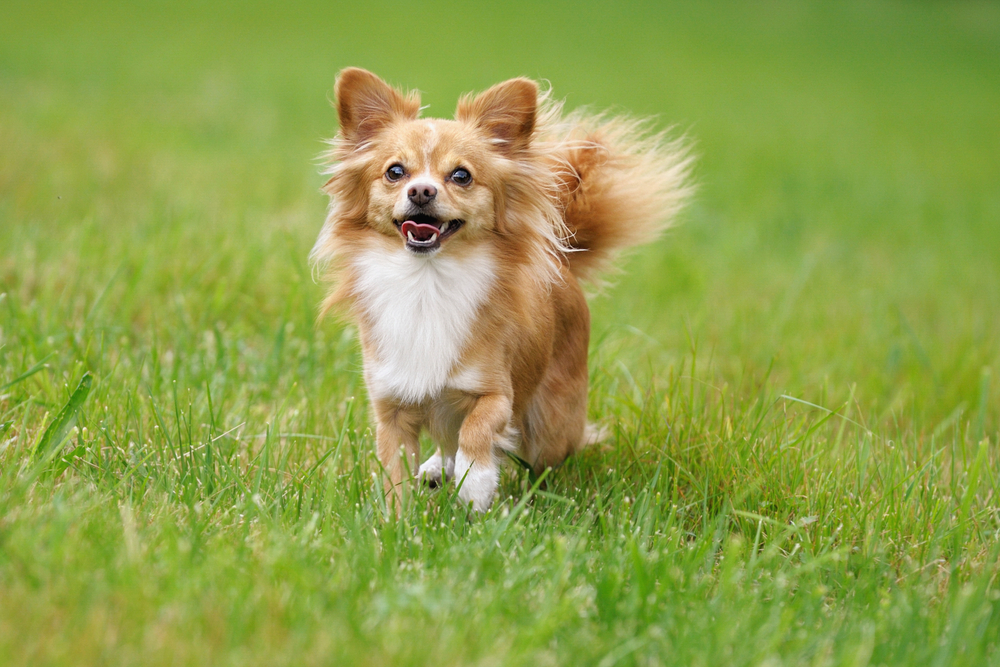Dogs need a wide variety of nutrients for a healthy and active life, especially nutrients that play important roles in brain function and immune system health. Omega-3 is an essential part of their diets, coming from food sources that are rich in it. However, not all commercial dog food recipes contain enough omega-3, so your dog may not be getting enough. If you’re looking for ways to boost your dog’s omega-3 intake, here are six great sources that you can give to your dog:
The 6 Great Sources of Omega-3 for Dogs
1. Salmon With Skin

| Source: | Natural |
- 177 calories
- Protein: 17 g
- Fat: 11 g
- Saturated Fat: 2.6 g
- Carbohydrates: 0 g
- No more than 2% of its weight, once a week or less. Consult with a veterinarian first before feeding. For dogs on a diet already containing fish, your vet may recommend an alternate source.
Few foods are fattier and richer in omega-3 fatty acids than wild-caught, natural salmon. It’s a naturally fatty food that contains both omega-3 and omega-6 fatty acids, as well as a great source of protein. Feeding your dog salmon with skin can help with coat health, brain function, and arthritic conditions. While it is a great source of omega-3, salmon is very high in fat and can lead to health issues caused by a high-fat diet. Never give your dog raw salmon. It must be well cooked but without the use of oils, spices, onions, or anything potentially toxic!
2. Cod With Skin

| Source: | Natural |
- 70 calories
- Protein: 15 g
- Fat: 0.6 g
- Saturated Fat: 0.1 g
- Carbohydrates: 0 g
- No more than 2% of its weight, once a week. Consult with a veterinarian first before feeding. For dogs on a diet already containing fish, your vet may recommend an alternate source.
Lower in calories and fat, cod with skin may work as an alternative to salmon. Although it doesn’t contain as much omega-3 as salmon, it’s lower in fat and less likely to throw off your dog’s fat intake. Salmon is more nutrient-dense, however, so your dog may not reap the same benefits from cod. Never give your dog raw fish. As with any human food or cooked food, make sure the cod is not cooked in oils, spices, onions, or anything potentially toxic to canines.
3. Canned Sardines

| Source: | Natural/Processed |
- 100 calories
- Protein: 12 g
- Fat: 5 g
- Carbohydrates: 0 g
- Toy-Miniature: 2 or less
- Small dogs: 3–5 per week
- Medium dogs: 6–8 per week
- Large Dogs: 8–12 per week
Consult with a veterinarian first before feeding your dog sardines. While they’re not the most appetizing fish on the market, canned sardines are nutrient-dense for their size. They’re high in omega-3 fatty acids and protein while containing less fat than salmon. Canned sardines are also quite low on the mercury scale since they only eat plankton, so it’s another great alternative if you’re looking for a low-mercury fish. When buying canned sardines, always purchase sardines packed in water and not oil.
4. Ground Flaxseed

| Source: | Natural |
- 37 calories
- Fiber: 1.9 g
- Protein: 1.2 g
- Fat: 2.95 g
- Carbohydrates: 2.0 g
- Toy-Miniature Dogs: 1/8–1/4 teaspoon
- Small Dogs: 1/4 teaspoon–1 teaspoon
- Medium Dogs: 1 1/2 teaspoon–1 tablespoon
- Large-Giant Dogs: 1–2 tablespoon
Ground flaxseed is not only a healthy source of omega-3, but it’s also completely plant-based and safe for dogs to eat. Flaxseed naturally contains omega-3 and omega-6 fatty acids, without the fishy smell of salmon or cod. It also contains important nutrients like dietary fiber for a balanced diet, which can help regulate your dog’s digestive system. It’s easy to make at home with a high-powered food processor, or you can typically find ground flaxseed in grocery stores.
5. Chia Seeds

| Source: | Natural |
- 60 calories
- Fiber: 5 g
- Protein: 3 g
- Fat: 3 g
- Carbohydrates: 5 g
Chia seeds are tiny seeds chock full of nutrients, including omega-3 and omega-6 fatty acids. Safe for dogs to eat in seed form since they’re so small, there’s no need to grind them in a food processor. They can be added to your dog’s food, as well as baked into homemade dog treats for a delicious and healthy snack. Slowly incorporate them into your dog’s diet and look for signs of indigestion or allergic reaction.
6. PetHonesty Omega-3 Fish Oil

| Source: | Supplement |
- Anchovy Oil
- Herring Oil
- Mackerel Oil
- Sardine Oil
- Toy-Miniature Dogs: 0–15 lbs: ½ pump
- Small Dogs: 15–25 lbs: 1 pump
- Medium Dogs: 25–50 lbs: 2 pumps
- Large Dogs: 50–75 lbs: 3 pumps
- Giant Dogs: 75+lbs: 4 pumps
If you prefer a liquid oil or supplement form of omega-3, PetHonest Omega-3 Fish Oil is a great source of essential fatty acids. PetHonesty contains four different fish oils, giving your dog a wider range of potential health benefits. Fish is a great source of omega-3, but it can be messy to cut and serve at home. Fish oil supplements are a little easier to use, but they can have a strong odor. If you don’t mind the smell, PetHonesty Omega-3 is a great way to increase your dog’s omega-3 intake.
Omega-3: Why Is It Important for Dogs?
Essential fatty acids like omega-3 play important roles in a dog’s diet. They’re involved in brain and eye development, as well as immune, skin, and coat health. Although omega-6 is closely related to omega-3, it functions differently and tends to be more abundant. While there are a lot of dog food recipes that cover omega-6, some can be lacking in omega-3. It is not something a dog’s body can produce, so it needs to be a part of its diet.
How Much Omega-3 Does My Dog Need?
The amount of omega-3 your dog needs depends on their weight and current health. Dogs need at least 50 mg of DHA/EPA omega-3 per kg. Some dogs may benefit from a higher dose. We recommend talking to your vet to make sure your dog is getting enough, especially if your dog’s diet doesn’t have many sources of healthy fats. While omega-3 is crucial for your dog’s health, be careful with the source you choose. Too much fat in a dog’s diet can cause health problems, potentially causing liver damage.
PangoVet. It’s an online service where you can <b>talk to a vet online</b> and get the personalized advice you need for your pet — all at an affordable price!
</p>
<div class="su-button-center"><a href=https://www.dogster.com/dog-nutrition/"https://pangovet.com?utm_source=dogster&utm_medium=article&utm_campaign=dog-nutrition%22 class="su-button su-button-style-default" style="color:#FFFFFF;background-color:#FF6600;border-color:#cc5200;border-radius:9px;-moz-border-radius:9px;-webkit-border-radius:9px" target="_blank" rel="nofollow"><span style="color:#FFFFFF;padding:0px 24px;font-size:18px;line-height:36px;border-color:#ff944d;border-radius:9px;-moz-border-radius:9px;-webkit-border-radius:9px;text-shadow:none;-moz-text-shadow:none;-webkit-text-shadow:none"> Click to Speak With a Vet</span></a></div></div></div>"}" data-sheets-userformat="{"2":515,"3":{"1":0},"4":{"1":2,"2":16776960},"12":0}"> If you need to speak with a vet but can’t get to one, head over to PangoVet. It’s an online service where you can talk to a vet online and get the personalized advice you need for your pet — all at an affordable price!

Conclusion
Omega-3 is an essential fatty acid that dogs need to thrive, obtaining it through their daily meals. Dog owners must provide their dogs with ample sources of omega-3 fatty acids, especially if their current kibble has an insufficient amount. Boosting your dog’s omega-3 intake can help improve their health, so it’s something to consider if your dog’s food is lacking. Before you start a new supplement or diet, consult with your vet to make sure your dog’s needs are met.
Featured Image Credit: Africa Studio, Shutterstock












